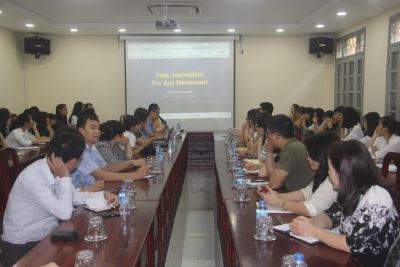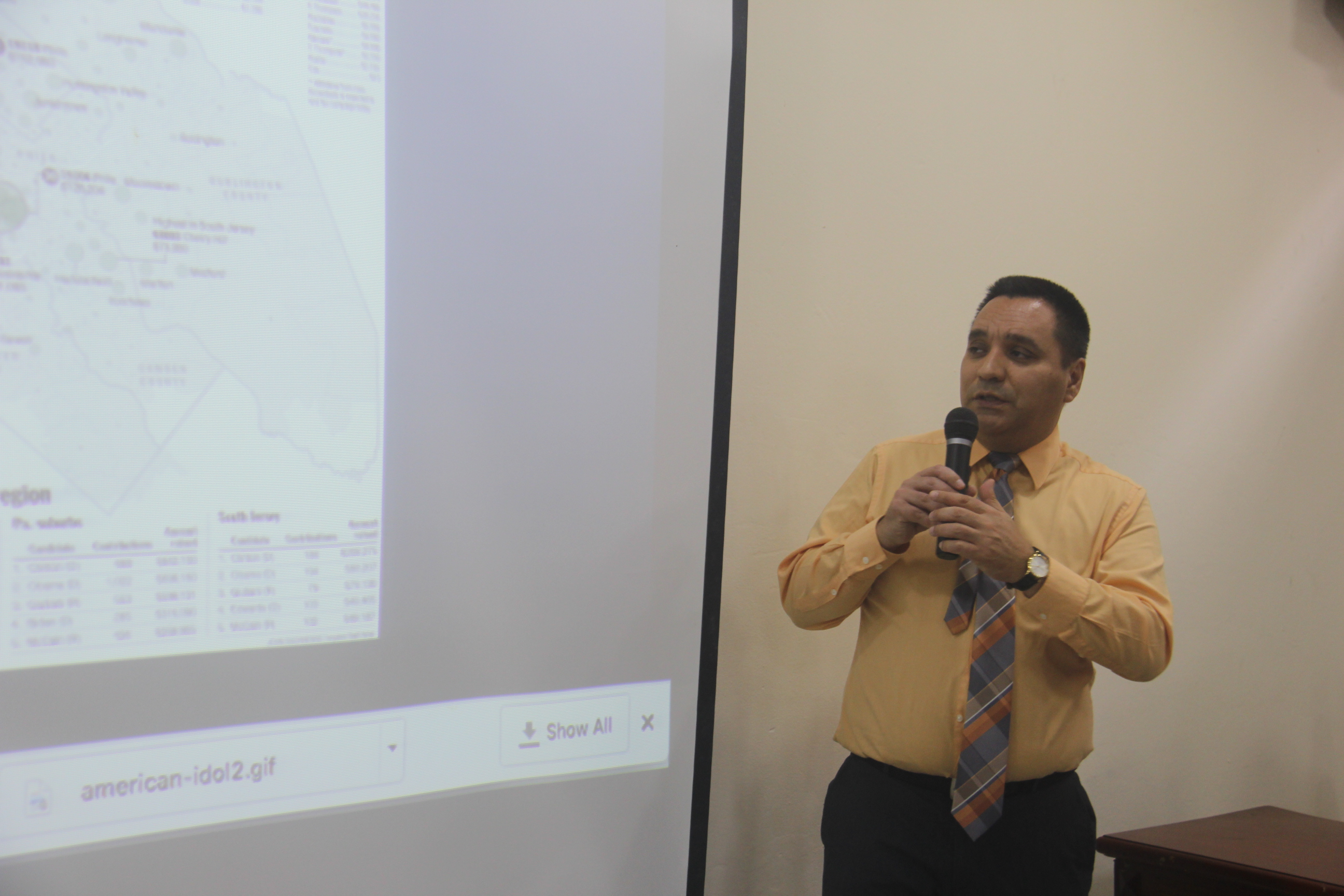
John Duchneskie is graphics editor of The Philadelphia Inquirer.
The presentation mentioned the inevitable changes of the US newspaper industry in the face of the strong development of science and technology and new audio-visual trends of readers. Electronic newspapers tend to develop more than printed newspapers, the need to view news of readers on mobile and digital devices is increasing, modern journalism thinking is increasingly changing towards more flexibility and responsiveness, readers' reactions to news are of special interest and are regularly studied, skills and understanding of technology are indispensable in modern journalism... In particular, the need for data lookup to serve research, communication, analysis and other needs in society has increased dramatically. According to statistics, Google has to process 3 billion information searches on the internet every day. That context is the reason for the birth and strong development of data journalism today. Data journalism also increasingly proves its superior efficiency in analyzing and reflecting information. Articles with attractive graphics, numbers, tables and pictures attract readers' attention much more than articles written in the traditional style.
More and more newspapers are establishing their own dedicated pages on data journalism. Over 51% of US news organizations have their own human resources department that processes numbers and data to “tell” stories through attractive, vivid infographic articles. This trend also forces journalists to equip themselves with in-depth knowledge of computers, software, and graphics.

View of the auditorium
The greatest asset of the newsroom is journalists who are both capable of writing and knowledgeable about information technology, and we are always “hunting” for such people while they are still in college, emphasized Mr. John Duchneskie. Journalists who are capable of writing, writing programming codes, are proficient in graphics, and have knowledge of images… are valuable assets of modern newsrooms. They can find work anywhere in the world and are highly paid.
Mr. John Duchneskie also shared that data journalism is used in almost all fields of reflection, from business, sports, culture to society, environment... Data is presented flexibly, diversely and uniquely, helping viewers have a more direct, clear and thorough view of the issue that journalists mention. It can be a map of the increase and decrease in income of a population to reflect economic growth; a conversion figure from the remuneration of a celebrity to the income of a middle-class family to more clearly show social inequality; graphics on the widespread use of guns to promote a new law on banning weapons... Data is a powerful tool to create a difference and uniqueness in the way journalists look at issues and report news.

The presentation also spent a lot of time sharing with journalism students the skills and tips to create an objective, accurate and attractive data article such as: being sensitive when finding the connection between numbers and the social issue you want to reflect; thinking clearly when analyzing numbers; placing data in each specific context to highlight its meaning; searching for data from many official and unofficial sources of information; carefully processing data and always cross-checking information; maximizing information in a presentation; simplifying the presentation, avoiding clutter...
|
Author:Thanh Ha
Newer news
Older news